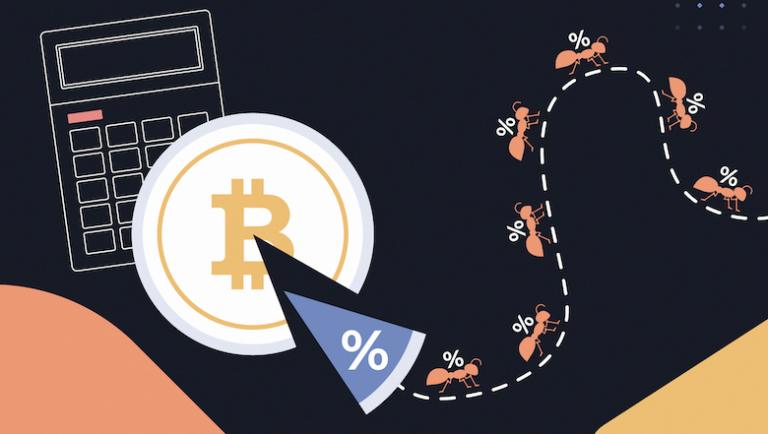Product House: How to build a product strategy?
In a small startup, any idea can be discussed even at lunch. And if the team of colleagues and contractors grows to 20 or 40, then a clear strategy is already needed. The treasure of the product, the guide, which he can send to the team instead of a thousand letters with answers. Let’s see what needs to be done so that the product has its own strategy.
The strategy is divided into three areas:
Run – the team already has a certain product and needs to be supported;
Change – there is a product that is slightly modified and improved;
Disrupt – a product that becomes an internal competitor and kills an old product.
During the development of a strategy, a product almost always encounters the fact that, on the one hand, vision is collective vision, and on the other, the product has its own vision that needs to be conveyed to others.
A product’s vision is born on the basis of data and its task is to discuss a new idea with the team and get feedback. And then a general competent vision of the product appears.
For convenience, Vision should be indicated in the annual planning document so that the team knows in which direction it will move.
Let’s look at each direction of the strategy separately:
Run

Run is a bit of a boring, monotonous strategy: the direction consists of operational activities and support.
What do we do with an old product, if the company needs it:
- We minimize expenses. The product thus brings money and works well. Instead of spending a lot on development, a company can simply support it.
- We improve quality metrics so that the product continues to work well.
- We satisfy internal and external customers. If there are dissatisfied users, then funds are sent to eliminate bugs and small features that make the product a little better.
The RUN strategy is used on an old product that has a loyal audience and is scared to take risks. And although this strategy may be boring for the product, it should still participate in it.
Change

Change-strategy is chosen to change the current product, which is not very many years old and which is gradually improving. This strategy is used by most products.
What we do with the current product, if you need to change it a little:
- We focus on the client. We analyze the user’s behavior and communicate with him.
- We study the needs of the client.
- Gather feedback.
- We check the prioritization hypothesis on the current product.
- We influence the growth of metrics.
- We monitor the revenue, LTV.
- We increase quality metrics. May be slightly below priority.
- We use the TimeToMarket technical metric: we work to accelerate the time for delivering features, we look at how long releases appear, and how quickly the idea is implemented.
Disrupt

Disrupt – implemented on startups and new products. This strategy is tougher and less commonly used.
What are we doing with the new product:
- We enter the market as soon as possible in order to get feedback from users.
- We are improving the business model on live data and collecting feedback on it.
- We work on the needs of each segment.
If you want to bring an old product to a new market, then most often products also choose Disrupt.
Metrics are selected under the strategy:
In Run, you need to estimate the number of incidents.
In Change, the team will focus on the growth rate.
In Disrupt, the first positive feedback from users will be an important metric.
All three strategies affect the product and, through it, the project team, because different people need different people. About once a year, a product needs to move from one strategy to another. This happens when the service is stable and every month brings a certain amount of money. At this point, the product discusses with the manager the product transfer from Disrupt to Run, and then the project team changes.
For convenient selection of strategies used Moore Curve. It shows at what stage the product is. Based on this, the product chooses a strategy.
What users does Moore Curve show?
- Innovators – begin to use a new, unknown product.
- Early followers – picks up the idea of innovators.
- The gap between the early followers and the early majority. We need to convince potential consumers that they cannot live without this product.
- Early majority – give in to offer and buy goods.
- Later, the majority – initially they do not believe in a new product, but after looking at those who use this product, they still get the same.
- Uvalny – up to the last they defend their position, but as a result they also become users of the product.
The cost of attracting an audience from innovators to lodges will grow, but with different intensities. For example, in the “abyss” there will be a big leap. In the early stages, you can attract an audience almost for free, and from the “early majority” to the “bumpier” the cost of attraction will almost always be the same.
When the product is at the “innovators” stage, the product needs to use a risky strategy, because the “Wishlist” of the early followers are very different from the Wishlist of the early majority. The first users want to stand out with a new product, and the next product is already important.
At the “early majority” stage, product development takes place and the Change strategy is used. At the stage of transition of the “late majority” to “bumpier”, the product is transferred to the Run-strategy.
What to read about strategies for the product?

In The Bridging the Abyss, Jeffrey Moore describes his curve and talks about how companies can bridge the abyss. And in the book “Inside the Tornado” he shares how companies, having jumped over the “abyss”, begin to change.
What mistakes do you make when choosing a strategy?
- No vision. The product becomes like a hodgepodge: users complained – the company repaired, users wanted updates – they rolled it out, but the company did not adhere to its clear strategy.
- Granite vision of the product. The company adheres to the initial strategy and does not want to change in the future.
- Look only at competitors. The company decides to blindly follow competitors.
- “I know better what customers need.” The erroneous position of many products.
- “More features – more value.” Another erroneous position of the product, which considers: if there are a lot of features, the product becomes better.
What if there is no general vision when you need to choose a strategy?
In this case, the product should collect a common vision. Where to get information from? They were laid out in stages:
- Customer Development (work with users). We ask people about the experience of using your / similar product, what they think about your product or a competitor’s product.
- Brainstorms within the team and prototyping. A product draws visuals with its team and then shows to other products or to its leader.
- The financial analysis. We analyze the strengths and weaknesses of the product in order to understand where to channel the funds further.
- Analysis of trends, industry shifts. For example, a team develops a product for large cities, because the audience in them is growing.
- Analysis of foreign competitors.
- Meetings with market experts. An expert can tell you which way to go and how to develop the product in the future.
- Own dream. The desire of the product to create from ordinary Mario Super Mario.
Choose a strategy wisely so that the product grows and delights users and the team!




